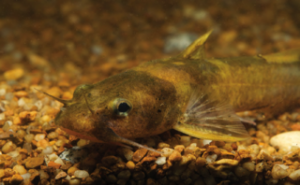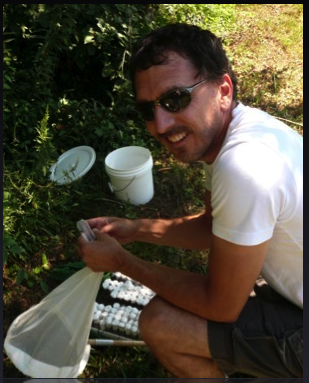- Mayr, E. 1947. Ecological factors in speciation. Evolution 1: 263-288. [journal link]
- Bush, G. 1969. Sympatric host race formation and speciation in frugivorous flies of the genus Rhagoletis (Diptera, Tephritidae). Evolution 23: 237-251. [journal link]
- Schluter, D. 1996. Ecological speciation in postglacial fishes. Phil. Trans. R. Soc. Lond. B 351: 804-814. [doi link]
- Rundle, HD., P. Nosil. 2005. Ecological speciation. Ecology letters 3: 336-352. [doi link]
EEB Seminar, October 19: “Adaptation in technicolor! The developmental genetic basis of butterfly wing pattern evolution”

Image from Reed et al. (2011) optix drives the repeated convergent evolution of butterfly wing pattern mimicry. Science.
Dr. Robert Reed, Associate Professor in the EEB department at Cornell University, is presenting a talk titled, “Adaptation in technicolor! The developmental genetic basis of butterfly wing pattern evolution” on Friday, October 19. Regarding his research: “Most of my work aims to uncover the genes and developmental processes that govern the diversification of animal color patterns. I want to know how development influences the range of variation that arises and is maintained in natural populations. I also want to know how, in turn, natural selection drives the evolution of developmental processes. Butterfly wing patterns are my study system of choice because they permit a beautiful integration of population biology, phylogenetics, ecology, and developmental genetics. Developing butterfly wings are easy to work with in the lab and we have a good grasp of the evolutionary pressures driving wing pattern evolution.” For more information on Dr. Reed’s research, please go to his website at The Reed Lab.
October 16th Journal Club: Sexual Selection and Speciation
Here are the readings for next Tuesday’s journal club discussion on sexual selection and speciation:
West-Eberhard, M. J. 1983. Sexual selection, social competition, and speciation. The Quarterly Review of Biology 58:155–183. [doi link]
Kirkpatrick, M., and M. J. Ryan. 1991. The evolution of mating preferences and the paradox of the lek. Nature 350:33-38. [doi link]
Boughman, J. W. 2001. Divergent sexual selection enhances reproductive isolation in sticklebacks. Nature 411:944–948. [doi link]
Barraclough TG, Harvey PH, Nee S. 1995. Sexual selection and taxonomic diversity in passerine birds. Proc. R. Soc. London B Biol. Sci. 259:211–15. [doi link]
Darwin’s Sleepwalkers: Naturalists and the Practices of Classification
 On Nov. 8th at 5pm Peter Dear from Cornell University will be talking in the Welles-Brown Room of Rush Rhees Library on “Darwin’s Sleepwalkers: Naturalists and the Practices of Classification.” The Humanities Project provides the following blurb on this talk: “Ernst Mayr famously claimed that the practices of classification in natural history underwent no sharp change following the rapid acceptance among naturalists in the 1860s of Darwin’s transformist arguments in the *Origin of Species*. More recently, Polly Winsor has argued for the importance of taxonomy in the development of Darwin’s great theory, in effect, her argument similarly blends taxonomy before and after 1859. Broadly speaking, such positions are surely right: Darwin especially used arguments referring to varieties, species, and genera throughout his writings, and he could hardly have expected his use of these categories to carry any persuasive force if he had reinvented them wholesale. Darwin clearly recognized his reliance on the work of other, non-transformist taxonomists, and needed in effect to explain how their work could have produced just such groupings as his own theory explained through descent with modification. Since these groupings served in many cases as evidence for his theory, they could scarcely be accepted on its basis. Darwin wanted only to reinterpret their meaning, not to undermine the notion of an already achieved natural classification; he wanted to use accepted taxa as data for his theory when only his theory (he thought) could justify them. How could that be, without argumentative circularity? Darwin’s practical solution involved a wholesale naturalization of classification.”
On Nov. 8th at 5pm Peter Dear from Cornell University will be talking in the Welles-Brown Room of Rush Rhees Library on “Darwin’s Sleepwalkers: Naturalists and the Practices of Classification.” The Humanities Project provides the following blurb on this talk: “Ernst Mayr famously claimed that the practices of classification in natural history underwent no sharp change following the rapid acceptance among naturalists in the 1860s of Darwin’s transformist arguments in the *Origin of Species*. More recently, Polly Winsor has argued for the importance of taxonomy in the development of Darwin’s great theory, in effect, her argument similarly blends taxonomy before and after 1859. Broadly speaking, such positions are surely right: Darwin especially used arguments referring to varieties, species, and genera throughout his writings, and he could hardly have expected his use of these categories to carry any persuasive force if he had reinvented them wholesale. Darwin clearly recognized his reliance on the work of other, non-transformist taxonomists, and needed in effect to explain how their work could have produced just such groupings as his own theory explained through descent with modification. Since these groupings served in many cases as evidence for his theory, they could scarcely be accepted on its basis. Darwin wanted only to reinterpret their meaning, not to undermine the notion of an already achieved natural classification; he wanted to use accepted taxa as data for his theory when only his theory (he thought) could justify them. How could that be, without argumentative circularity? Darwin’s practical solution involved a wholesale naturalization of classification.”
October 9th Journal Club
Next week we will be reading a couple of foundational papers and two empirical papers about reinforcement.
Brown, W. L., and E. O. Wilson. 1956. Character Displacement. Systematic Zoology 5:49–64.
Dobzhansky, T. 1940. Speciation as a stage in evolutionary divergence. American Naturalist 74:312–321.
Noor, M. A. 1995. Speciation driven by natural selection in Drosophila. Nature 375:674–675.
Rundle, H., and D. Schluter. 1998. Reinforcement of stickleback mate preferences: Sympatry breeds contempt. Evolution 52:200–208.
EEB Seminar, October 5: “The evolutionary ecology of pathogen host interactions: How do trade-offs in hosts and pathogens affect defense and virulence?”
Dr. Kurt McKean, Assistant Professor of Biological Sciences at the University at Albany, is presenting a talk titled, “The evolutionary ecology of pathogen host interactions: How do trade-offs in hosts and pathogens affect defense and virulence?” on Friday, October 5. For more information on Dr. McKean’s research, please go to his website: McKean Lab.
Bundt Cakes for Coffee Time Today (Monday)
Journal Club, 2 Oct: Divergence Population Genetics
EEB journal club will spend a second week on speciation with gene flow, this time we will cover divergence population genetics.
Required Readings:
1. Wu, C.-I (2001) The genic view of the process of speciation. J. Evol. Biol. 14: 851-865. [doi link]
2. Pinho, C. and J. Hey (2010) Divergence with Gene Flow: Models and Data. Annual Review of Ecology, Evolution, and Systematics 41:215-230. [doi link]
3. Machado, C., et al. (2002) Inferring the History of Speciation from Multilocus DNA Sequence Data: The Case of Drosophila pseudoobscura and Close Relatives. Mol. Biol. Evol. 19: 472-488. [journal link]
4. Millicent and Thoday. (1960). Gene Flow and Divergence under Disruptive Selection. Science. 131:1311-1312. [doi]
Journal Club, Sept. 25th: Hybridization
This week we are having our first discussion about speciation with gene flow. Our topic this week is hybridization. Readings are below and after the fold.
Required readings for Week 4:
Blair, W. F. 1951. Interbreeding of natural populations of vertebrates. The American Naturalist 85:9–30. [jstor link]
Stebbins, G. L. 1959. The role of hybridization in evolution. Proceedings of the American Philosophical Society 103:231–251. [jstor link]
Harrison, R. G. 1986. Pattern and process in a narrow hybrid zone. Heredity 56:337–349. [doi link]
Rieseberg, L. H., C. Van Fossen, and A. M. Desrochers. 1995. Hybrid speciation accompanied by genomic reorganization in wild sunflowers. Nature 375:313–316. [doi link] Continue reading
EEB Seminar, September 28: “Ecological and Evolutionary Consequences of Venom Production in Catfishes”
 Dr. Jeremy Wright, Postdoctoral Fellow of the University of Rochester and member of the Werren Lab, is presenting a talk titled, “Ecological and Evolutionary Consequences of Venom Production in Catfishes,” on Friday, September 28. He recently completed his Ph.D. at the University of Michigan, where his research interests included the ecology and evolution of venoms in catfishes at various levels of biological organization, as well as traditional and molecular systematics of various groups of fishes. He joined the Werren lab in late July, where he is working on the function and molecular evolution of venoms in parasitoids.
Dr. Jeremy Wright, Postdoctoral Fellow of the University of Rochester and member of the Werren Lab, is presenting a talk titled, “Ecological and Evolutionary Consequences of Venom Production in Catfishes,” on Friday, September 28. He recently completed his Ph.D. at the University of Michigan, where his research interests included the ecology and evolution of venoms in catfishes at various levels of biological organization, as well as traditional and molecular systematics of various groups of fishes. He joined the Werren lab in late July, where he is working on the function and molecular evolution of venoms in parasitoids.


